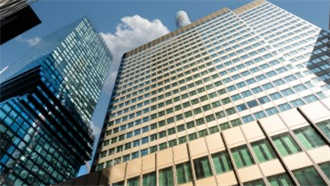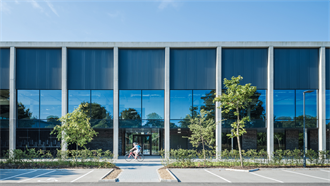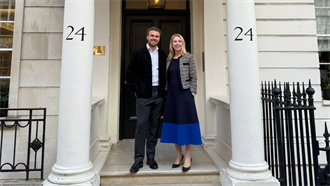The City of London Corporation has sent its first-ever delegation to Expo Real as part of a strategy to attract new investment into the City, by showcasing the Square Mile’s sustainable development opportunities.
In pursuit of a number of key strategic goals, including a net zero Square Mile by 2040 and securing funding for a range of infrastructure projects, the City Corporation is attending as part of a UK-wide delegation, sponsored by ‘Opportunity London.’
Shravan Joshi, chairman of the City of London’s planning and transport committee, told PropertyEU: ‘We have recently established our Whole Lifecycle Carbon Assessments guidance, which explains how we expect developers to set out their carbon goals very early in the planning process,’ he said. ‘That means explaining fully why they need to demolish and start again as opposed to retrofitting, where they are pursuing new developments.’
Recent headlines suggest that the UK government is rowing back on some sustainability goals, but Joshi underlined the City’s commitment.
‘There isn’t really national parity on ESG matters so it has fallen on local authorities like ourselves to set out targets, and our aim is to create greater transparency.
‘Other initiatives include healthy streets, a transport review that is prioritising pedestrianisation, without ignoring accessibility issues and the need for vehicle use, especially for servicing offices.
‘We set out a climate action strategy a few years ago and chose not to claim a climate emergency, as a lot of other local authorities did. We took a data-based approach, we collected a baseline to understand what the carbon story was for the Square Mile, and we created a carbon action plan.’ While the 2040 net carbon zero goal is fully funded by the corporation, the plan is to welcome inputs from private partners. ‘I want net zero to happen without offsets,’ Joshi underlined.
Turning to other urgent matters, Joshi said that the City of London Corporation was continuing to monitor the debate around the future of work, while responding to clear demand drivers for office space.
‘Looking at the Square Mile, we’re seeing different sectors coming back to work at different rates. Legal or insurance teams are back virtually 100%. If you look at the media headlines, financial services want employees back in the office as well. In terms of Transport for London figures, the system is at around 80-85% of pre-pandemic public transport volumes on weekdays, but 120% on weekends, which we see as testament to the success of our placemaking initiatives.
‘Twenty years ago, the Square Mile was dead on weekends and evenings but that has changed thanks to promotional schemes and work we have don’t to bring culture, hospitality and leisure to the area.’
Yet Joshi underlined that there was tangible need to construct more offices too. ‘Twelve months ago, we were recording figures of around 550,000 employees in the City. Today there are 580,000 employed people, and forecasts suggest that will keep growing up to 2040.
‘That means a need for around 1.9 million m2 of space by 2040, taking into account a hybrid working model. Compare that with our current planning pipeline of 500,000 m2, and another 500,000 m2 under construction, and there’s still room for more development.
‘We have 10 tall towers at various stages of planning, and occupancy metrics for the area’s largest buildings are impressive. 22 Bishopsgate is 100% let, while 8 Bishopsgate is 75% let; of the buildings that are coming through, the new towers are pre-let to around 45%.
‘We think that the Elizabeth Line is helping massively with that, with our infrastructure measures acting as a big magnet.’


































